If you lined up a hundred successful artists and asked for their best advice on “how to become a good artist,” you’d undoubtedly receive dozens of different answers.
This question, however, is essential, albeit it, elusive. And it comes in many forms: “how do I get into galleries?” or “how do I get noticed as an artist?” and, of course, “how do I make a living as an artist?”
For the next few blogs, I’m going to look at what it means to become a good artist, by turning a spotlight on the practices of artists who have achieved major milestones in their careers and how they did it.
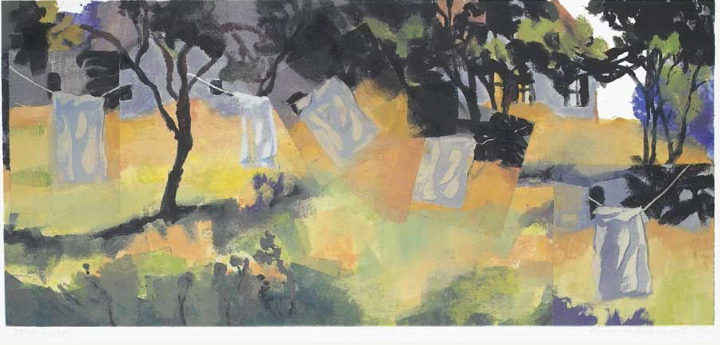
First up, Joellyn Duesberry (1944-2016), an artist I met in the early 90s when I worked for Carol Siple at her Denver gallery, and got to know Joly quite well when I published her book, Elevated Perspectives, the Paintings of Joellyn Duesberry. Now, working for her family as a consultant helping to catalogue her work, place some things in museums, and sell others privately to collectors, I am learning even more about what she did to constantly propel herself and her art forward.
Competing against yourself
Primarily an oil painter, Joly focused on landscape. She was a “plein air” painter before it had a cool name and she had some great stories about being so immersed in her work that. One of my favorites was the time a bull walked up behind her and started breathing on her back. Annoyed by the interruption and then startled by the reality that a bull could sneak up on her, she carefully backed away, ceding the meadow to the massive beast.
Joly was intense and would have probably been considered ADHD, had that been a diagnosis at the time. Over the years, I think Joly could be her own worst enemy, and yet she was easily one of the hardest working and most driven artist I have ever known.
Check out Joly’s curriculum vitae to see what I mean: Joellyn Duesberry CV.
Suffice it to say, she was a force of nature. She’d fought off cancer three times before finally succumbing at the age of 72. I believe Joly was keenly aware of the ticking clock and simply refused to stop running, cancer be damned.
But that’s not what I want to tell you about Joly or why I think she was successful. She became a good artist because she never stopped challenging herself. The work she was creating at the end of her life was bold and clearly taking her in a deeper level of discovery. Yes, Joly was still pressing herself forward, still exploring, still looking for a new language in painting even as cancer was winning.
The race was always against herself and time. She didn’t resent others for their success; she simply tried harder.
She could have been resentful; she had to work harder than, for example, her male contemporaries. That’s just the honest truth. All women did and still do.
How You See Yourself
Joellyn always called herself an autodidact, a self-taught artist. She was referring to the fact that she began painting when she was five years old and taught herself without the influence of teachers until she went to college. She earned a BA from Dartmouth and a MA from Smith, and went on to study at the Art Students League of New York, the National Academy of Design, and the New York Academy.
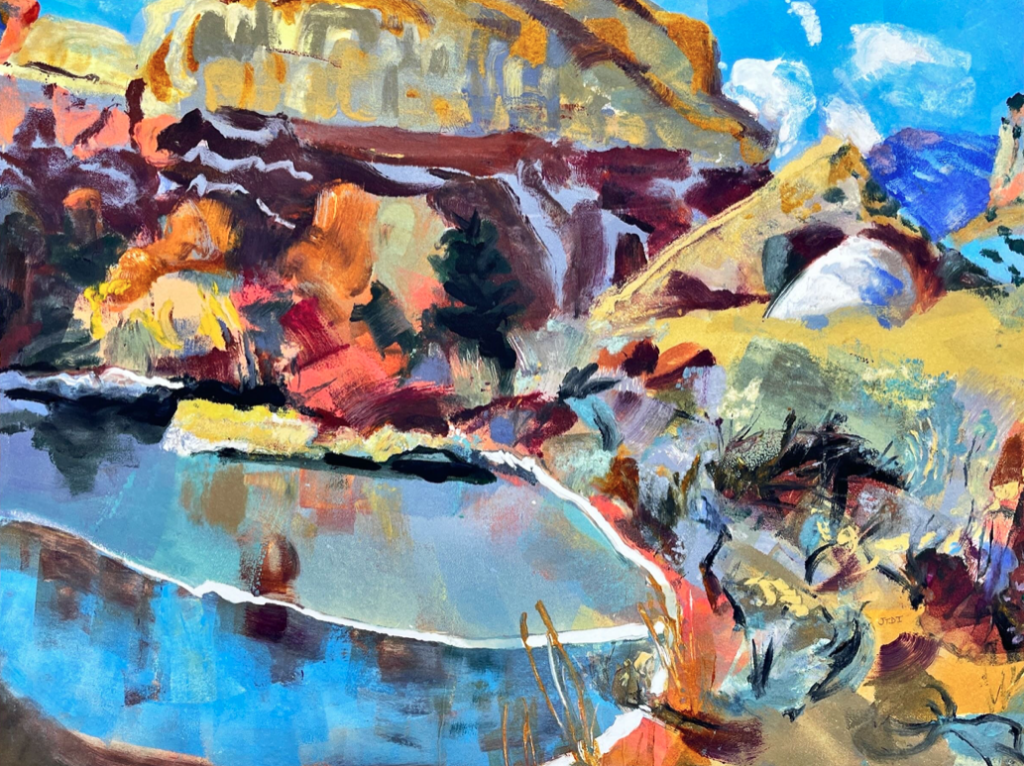
I only bring this up because it always struck me as odd that she called herself an autodidact. Looking back, I believe she did this out of fear.
Staying In Front of Fear
I’m speculating and could be wrong about this, but I think Joly suffered from nearly debilitating self-doubt. She told me once that her mother had been terribly abusive. I don’t know that Joly ever fully swept those memories out of her psyche. And I wonder if calling herself an autodidact was a shield she held up to protect herself from the fear of what people would say if she called herself an artist, pure and simple.
Maybe too, this fear was the wellspring of her determination and drive that pushed her through exhaustion and pain.
I want to be careful here, though, to make this distinction: determination isn’t enough to get your work into museum collections; museums don’t reward the squeaky wheel. Determination might get you noticed, but the quality of your work gets you in.
Joly did not pursue art for accolades. She worked to become a good artist and then an even better artist. She pursued this goal her whole life, right to the very end.
Listen to Your Mentors
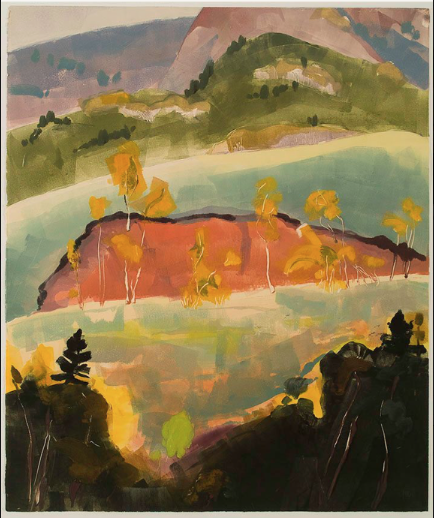
In 1986, Joellyn took a workshop with Richard Diebenkorn (1922-1993). She notes in her book, Elevated Perspectives, that Diebenkorn instilled three important concepts.
- The abstract and the real are indistinguishable in painting.
- Her paintings were landscapes that masqueraded as abstracts–or maybe were abstracts that masqueraded as landscape–and that this was her unique expression.
- That her pursuit of landscapes as abstract and vise-versa most likely came out of childhood bliss and terror.
And then Diebenkorn suggested she try printmaking, in particular, monotypes, to help her loosen up and better see shapes and patterns.
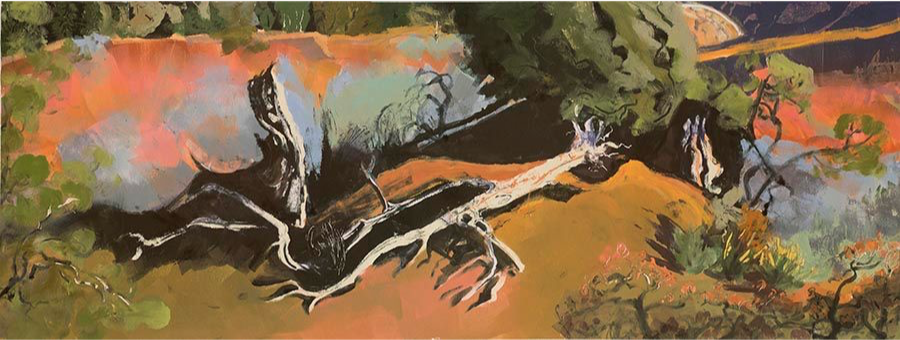
Explore the Unknown
For nearly 30 years after Diebenkorn’s suggestion, Joellyn booked printmaking sessions with master printer Mark Lunning, at his studio, Open Press, in Denver. According to Mark, Joellyn’s original intent was to use the printmaking process to help resolve her paintings. Over the years, she embraced printmaking for the way it shifted her perception and helped her to see painting and the world differently.
She was a colorist more than any artist I’ve ever met. She’d book three- to four-day sessions. We’d spend the first day mixing inks and we’d make the most amazing colors. That was one of the things I loved about Joly, her dedication to her work and the process.”

Don't Get Too Comfortable
Dan Sprick told me that when he would paint with Joly she sometimes brought old canvases with paintings she didn’t like and painted over them. This isn’t unusual, reusing an old canvas, but Joly would turn the canvas sideways or upside down, or would just start painting right onto the canvas as it was.
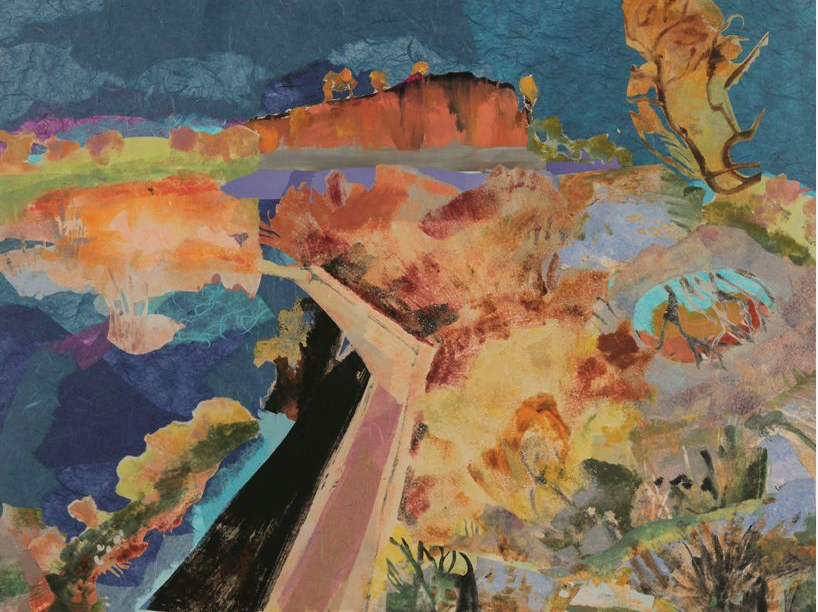
When Dan asked her why she did that–didn’t it make her crazy looking at all those old marks?–she said, “It throws me off.”
To which Dan replied, “Painting is hard enough already.”
This was, Dan thinks, Joly’s attempt at deskilling, a 20th-century notion that confronted art as a skilled labor and sought to break from skill in order to build a new set of skills. Think Marcel Duchamp’s ready mades.
Ultimately, Dan suggested, this might have been her way to place one foot in abstraction while the other remained squarely in realism.
Experiment
Monotypes–the printmaking form Diebenkorn suggested Joly try–are essentially paintings done on a surface such as Plexiglass that are transferred onto another surface, usually paper. The artist works with inks and tools called brayers–rollers of various sizes–and other tools that allow them to achieve the right composition, look, and feel. Here’s an article in ARTnews that explains the tools and processes common to this form of printmaking.
Spontaneity and abstraction are key aspect of monotypes because of the inks and how they dry, and the tools one usually uses in the process of creation.
Master printmaker Mark Lunning describe Joly’s process to me, in particular how she would bring a painting that was, say, 80% complete but was not working. She would then set to work creating monotypes that played with form, design and color to find solutions.

Work is Play / Play is Work
And so, in the print studio, Joly played. She played with color and inks and papers. She experimented with ghost prints–the second pulls off the plate or the pull of another lighter weight paper laid atop the first run that absorbs the excess ink. Sometimes, Mark said, she came to the studio with old monotypes from previous sessions that she didn’t think worked. She’d cut them up and reassemble them into new works.
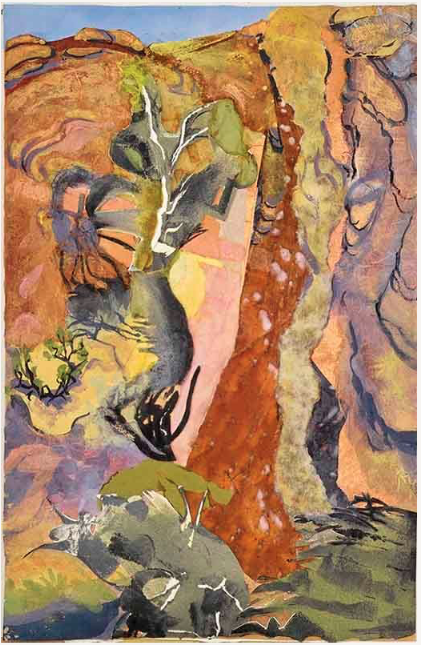
I use the word “play” but it was work, of course, and a grand experiment. It was collaboration with another artist. And I think, when I look at Joly’s monotypes, it was joyful.
What does it take to be a good artist? In Joly’s case: fear, mistakes, experimentation, play, camaraderie, skill and the release from trying too hard.
Ultimately, it requires the greatest amount of faith.
As for Joly, she embodied all of this. Toward the end of our call, Mark told me how Joly loved the notion of abstraction and talked about it as an objective. And yet, he said, for all her talk she never quite let herself go there.
Maybe in her next life.
Visit JoellynDuesberry.com to see more of her work.
Want to learn more about Artists Marketing?
Visit my Let’s Work Together page to see how I work with artists.
If there’s an artist you’d love to learn more about, let me know in the comments below.
Thanks for reading!
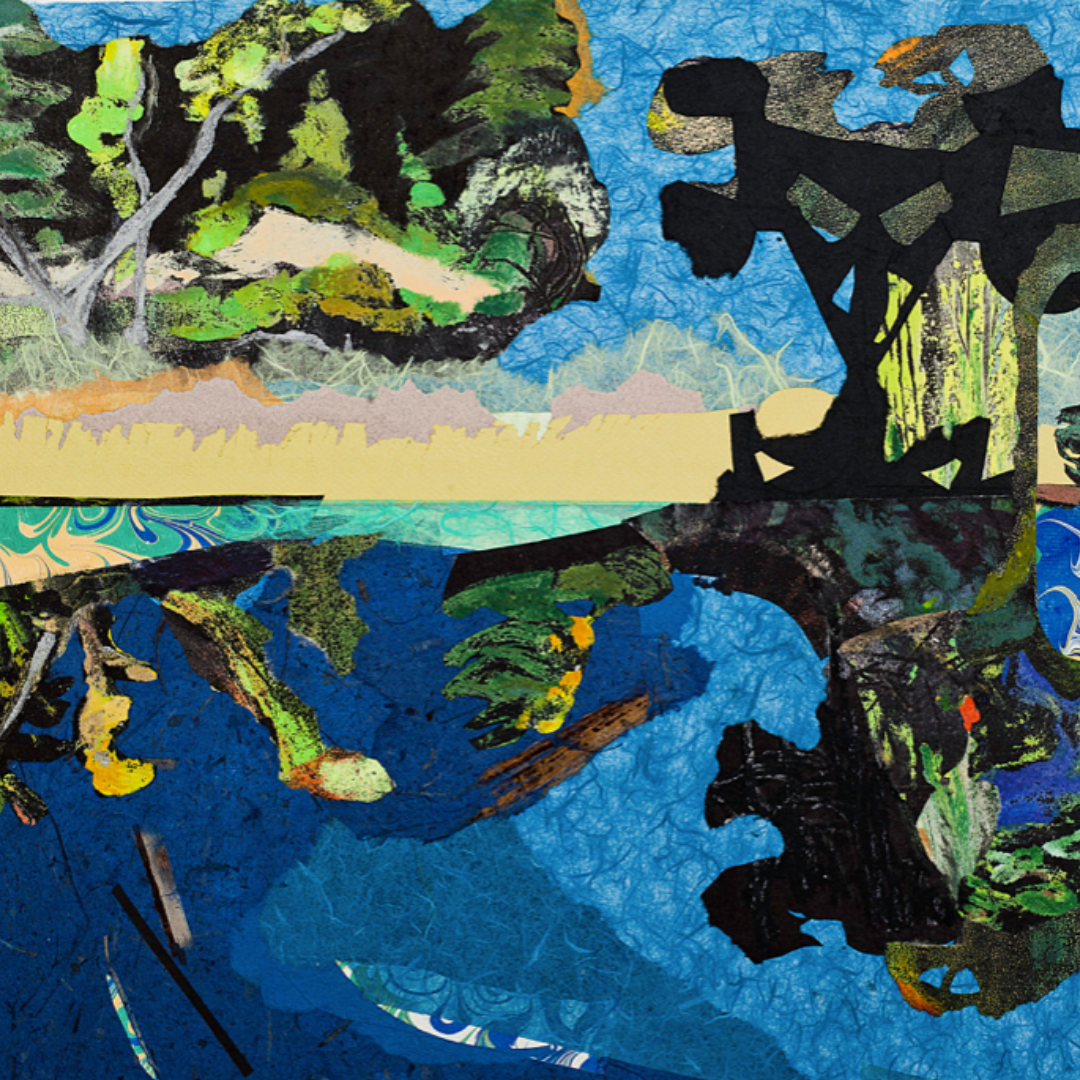
10 thoughts on “How to Become A Good Artist: Joellyn Duesberry”